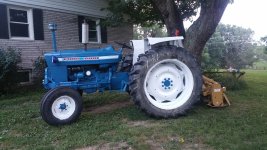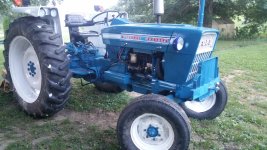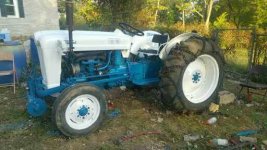I had the opposite problem. I bought a NAA in 1974 as my first tractor. At 33 HP and an 800 lb 3pt, it does a lot of jobs very well. However, as some of the newer implements came out, it did not handle them very well. For example.it is a real challenge to run an auger. The 3 pt is marginal at best. Over half the time, I had to jack the auger out of the hole as the lift would not pick it up. I wound up digging over 300 post holes by hand rather than fooling with a stuck auger. It is also marginal with a rotary tiller. To till full depth I had to make 4-5 passes and with the high ground speed of the older tractors the governor cycling produced varying wheel speeds and wash boarding in the garden. I still had to run a disc and drag to get a somewhat even surface. The potato plow would swing side to side with the solid sway bars requiring 3 passes or more while harvesting the potatoes. The remaining attachments it does very well after adding a slip clutch to the PTO shaft. I acquired a 1970 Ford 4000 last summer at a very reasonable price, 2117 actual hours, 55 HP, 3200 lb 3 pt. It handles the auger great. Jerks it right out of the ground with a speed adjuster built into the lift. The tiller is 1 pass for full depth with the H/L tranny and the rpm of the diesel never varies. The ground is well tilled and flat, no rework required. Each tractor has its own nitch where it performs very well. having 2 tractors seems like the ideal solution, especially when changing rears. The only problem is I am still catching it from the other half about having 2 tractors, even though both are used every week. It doesn't compute that she has to have 4 sewing machines and a surger at over $1200 each to repair clothes once every 2 years. Total investment in both tractors was less than $4000, $3300 for the 4000 in2019 and $600 for the NAA in 1974.




